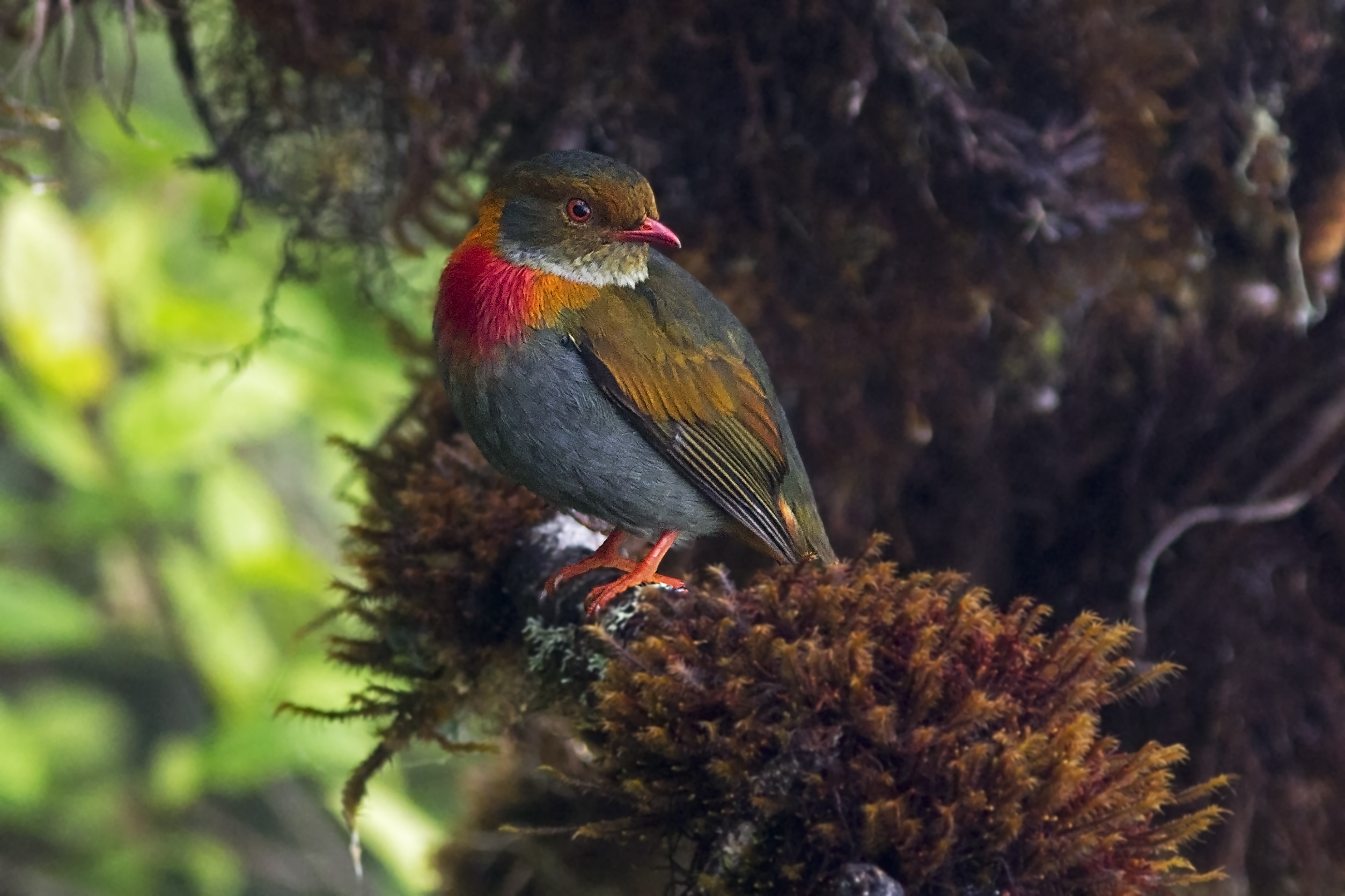Pantepui Forests and Shrublands
The ecoregion’s land area is provided in units of 1,000 hectares. The protection goal is the Global Safety Net (GSN1) area for the given ecoregion. The protection level indicates the percentage of the GSN goal that is currently protected on a scale of 0-10.
Bioregion: Guianan Forests & Savanna (NT21)
Realm: Southern America
Ecoregion Size (1000 ha):
5,101
Ecoregion ID:
490
Conservation Target:
99%
Protection Level:
8
States: Venezuela, Brazil, Guyana, Suriname
The Pantepui ecoregion in northern South America is host to an archipelago of more than 50 tabletop mountains: isolated and elevated islands ranging from 1,000 to 3,000 m in elevation that are called tepuis, a word from the Pemón Amerindians. Their unique, dramatic, and inaccessible landscape has led early explorers to believe many relict species still survive there—perhaps even dinosaurs and giant birds—and has provided inspirations to various work ranging from Sir Arthur Conan Doyle’s 1912 novel ‘The Lost World’ to animated movies.
On Mount Roraima, the endemic Roraima mouse finds a home among the clouds and pockets of dense vegetation with Sphagnum moss and dwarf trees growing amongst granitic outcrops which also form polls and wetlands in pockets. While this rare and range-restricted mammal do not look much different from other mice, recent studies of this species confirmed their unique evolutionary roots, since no extant relative species of mice can be identified and its place in the tree of life still a mystery.

The flagship species of the Pantepui Forests and Shrublands ecoregion is the Red-banded fruiteater. Image credit: Creative Commons
The landscape of Pantepui Forests & Shrublands ecoregion perforate an extensive matrix of highland savannas and rain forests across southern Venezuela, Guayana, Suriname, and Brazil. The tepuis are characteristically flat-topped, with steep, nearly vertical slopes interrupted by terraced rocky slopes. Some mountains present more undulating irregular summit contours. On the highest summits, the temperature can drop to an extreme of 0°C, but temperatures on the summits range from 8° to 20°C on average over the year. The Pantepui ecoregion is constantly humid, receiving 2,000 to 4,000 mm of rain/year with a subtle dry season. Soils are generally low in nutrients.
The vegetation on the Tepui Mountains is called the Pantepui floristic province and has a discontinuous distribution, only encompassing the ecosystems above 1,500 m. The ecoregion is characterized mostly by a diversity of montane shrublands, meadows, open rock communities, and forests.
There is an extraordinary degree of species richness on these isolated mountaintops, and they host some of the highest plant endemism in northern South America. Of the 2,322 species of vascular plants in 630 genera in the floristic province, 766 are endemic to the province, and 65 are restricted to the Guayana Shield. A representative tepui hosts four distinct vegetation zones, starting at the base which consists of either highland savanna or evergreen rainforest, followed by uninterrupted mat of rainforest between mountains, with a canopy between 25 and 45 m tall.
Humid montane forests sit on the talus slopes at the base of the steep cliffs, and finally the mountain summit is made up of members of the montane families of mangosteen, velvet tree, Magnolia, and Viburnum. Some of the endemic plants occur only on a single summit. The vegetation on the Pantepui shows very high endemism with 33% of the vegetation being endemic. Alone, there are a total of 20 species of the bamboo that are endemic to the Pantepui.
The Pantepui ecoregion hosts 186 mammal species, mostly located on the lower slopes of the mountains. Some of these mammals include an endemic opossum and white-eared opossum, long-tailed weasels, pale-throated sloths, a great variety of bats, an endemic rodent, three climbing rats, and two guinea pigs. This ecoregion has 628 species of birds with 41 of them being endemics including tepui tinamous, fiery-shouldered parakeet, tepui parrotlets, Roraiman nightjars, tepui swifts, rufous-breasted sabrewings, buff-breasted sabrewings, peacock coquettes, tepui goldenthroats, velvet-browed brilliants, white-throated foliage-gleaners, tepui antpittas, red-banded fruiteaters, and three manakins, among many others.
Due to the inaccessibility of both the steep slopes and high summits of the Tepui Mountains, much of the natural habitat is intact. The mountains above 800 m are designated protected conservation areas as natural monuments, national parks, or biosphere reserves. Parks include Monte Roraima National Park. However, human-induced fires at the base of the mountains have destroyed vegetation in extensive areas, and because of the remoteness of this region, enforcement of conservation regulations by reserve staff is difficult.
To continue to preserve this ecoregion the priority conservation actions for the next decade are to: 1) promote responsible tourism such as leave no trace practices to hikers and campers summiting the tepuis; 2) implement harsher punishment for illegal gold and diamond mining operations; and 3) create hunting limits to prevent over-hunting of some mammals and birds.
Citations
1. Sears, R., J. Schipper. 2018. Tepui. https://www.worldwildlife.org/ecoregions/nt0169. 14 August 2018.
2. Berry, P.E., O. Huber, and B. K. Holst. 1995. Floristic analysis and phytogeography. Pages 161-191 in P. E. Berry, B. K. Holst, and K. Yatskievych (editors), Flora of the Venezuelan Guayana. St. Louis: Missouri Botanical Garden and Timber Press.
3. Huber, O. 1995b. Geographical and physical features. Pages 1-61 in P. E. Berry, B. K. Holst, and K. Yatskievych (editors), St. Louis: Flora of the Venezuelan Guayana. Missouri Botanical Garden and Timber Press.



